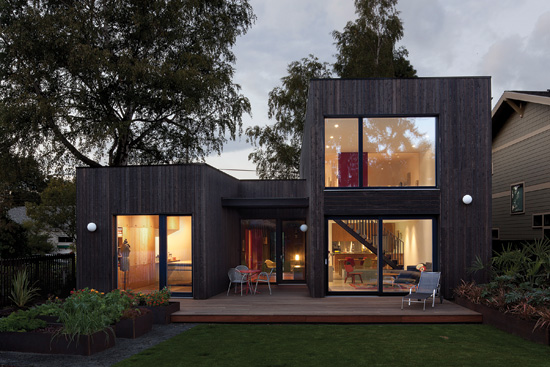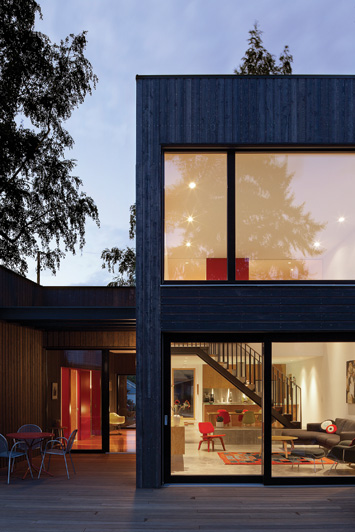European Windows Boost U.S. Performance and Design
Driving Better Performance
A chain is only as strong as its weakest link, and buildings can only be as efficient as their least effective systems. This truism is all the more inescapable when the aim is the most sustainable, most energy-efficient structure practical given other programmatic and design requirements. In fact, the push for net-zero energy buildings and Passive House performance has led to an “arms race” of sorts to create better architectural assemblies at what are considered the building's inherently weakest points: the envelope, air barriers, joints and interface zones, and fixed penetrations and operable openings.


Photos courtesy of Zola European Windows
For this modern home, sliding doors and large European windows are employed to create very large openings with high visible light transmittance, low SHGC, and good overall R-values.
In fact, in many circles, better windows are seen as the key to better architecture. Consider the requirements for Passive House windows; the Darmstadt, Germany-based Passive House Institute requires that “window frames must be well insulated and fitted with low-e glazings filled with Argon or Krypton to prevent heat transfer. For most cool-temperate climates, this means a U-value of 0.80 W/(m²K) or less, with g-values around 50 percent.” That's a lot to consider:
Low-E or low-emissivity glazings have coatings that minimize ultraviolet (UV) and infrared (IR) light transfer through the glass without limiting the amount of available visible light.
Argon and Krypton gas fills are pumped into double- and triple-glazed IGUs to reduce convective currents and thus thermal transfer through the window.
U-value—also called U-factor—measures the rate of heat transfer through a construction assembly. Given in Btus per square foot per hour for every degree Fahrenheit difference in temperature (Btu/h·ft²·°F) or, in Europe, watts per square meter by degrees Kelvin, the lower the U-factor, the better the window insulates, and 0.25 is a decent value in U.S. units. The aggressive Passive House benchmark is 0.80 W/(m²K), which is equivalent to 0.14 Btu/h/ft²/°F, a super-high-performance criterion that many U.S. window makers have not attained with commercial-grade offerings.
Last, g-value, the measure for total solar transmittance and sometimes called solar factor, window solar factor, or total energy transmittance (TET), is a prevalent specification in Europe. In the United States, solar heat-gain coefficient (SHGC) is used, measuring the solar energy transmittance of a window or door as a whole. This describes the proportion of solar energy available on the indoor side of the window, and SHGC is expressed as a number between 0 and 1 where lower values mean less solar heat is transmitted through the assembly.
It's important to note that SHGC includes not only solar energy transmitted directly through the glazing area but also solar energy absorbed by the glazing that is then thermally radiated inward.
For all these measures, the key is to consider how the Passive House standards and other European regulations diverge from normative building standards and prevalent U.S. energy codes. “We are seeing an exciting trend towards more widespread interest in high-performance construction,” says Katrin Klingenberg, executive director of Passive House Institute U.S. “The number of Passive House and building projects that are completed every year is steadily rising. Currently there are over 230 projects fully certified or enrolled in the certification process across the U.S. and Canada. Implementing windows with outstanding thermal performance and airtightness is a key component of achieving these levels of performance.” The expectations are higher, the performance ranges much more restrictive, and—as many architects judge—the quality of window construction is higher and subject to more restrictive tolerances.









